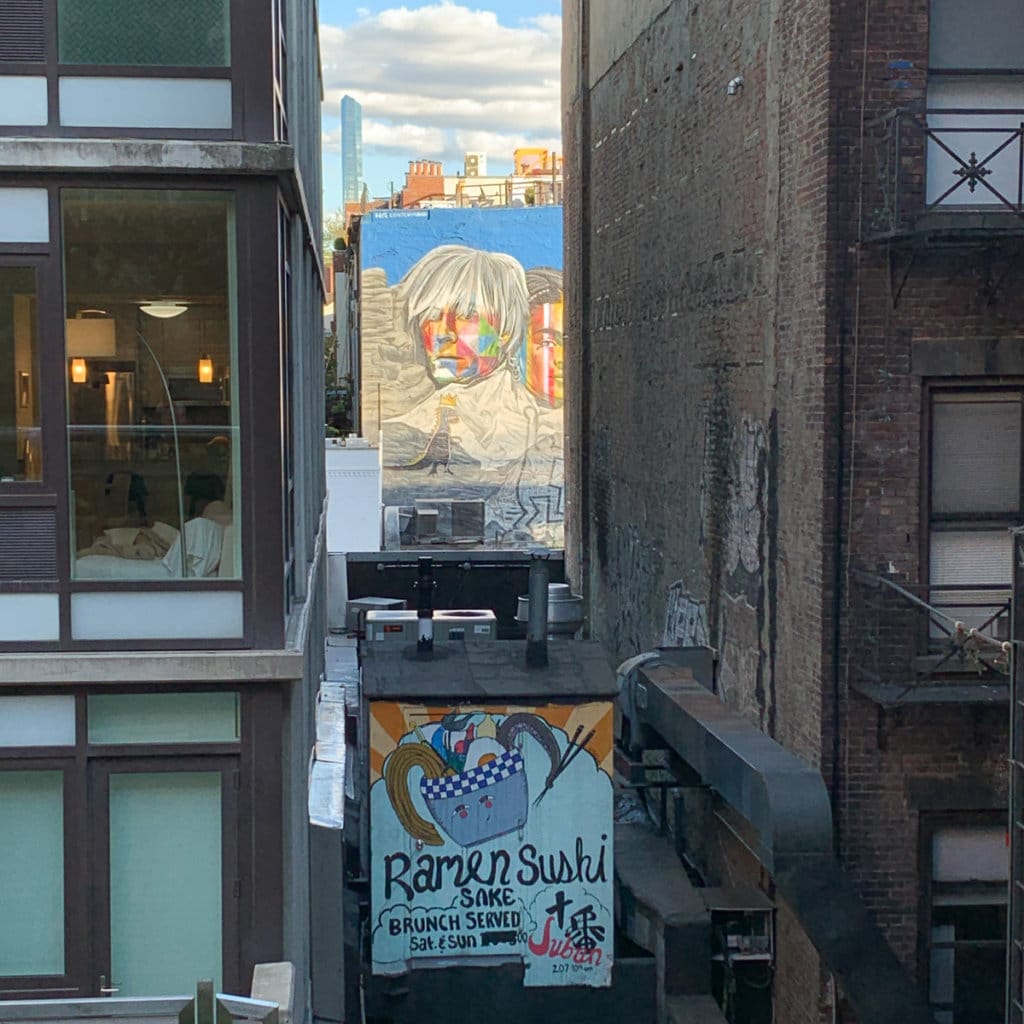
[Updated July 19, 2023] If there’s one thing that makes me feel like a New Yorker, it’s taking a stroll along the High Line while complaining about the crowds, the overdevelopment, and—my favorite grievance—how much “better” it was before it was “discovered.”
I can’t really claim this grievance with any other NYC landmark. By the time Matt and I moved here, much of Manhattan had already been vigorously sanitized to a mall-like blandness. I moved here too late to be able to reminisce about the seedy glamour of old Times Square–I’ve never known it without Olive Garden. And I cannot even imagine how the now-tidy stamp of land at Bryant Park used to be known as “Needle Park” because of syringes scattered on the ground.
I have no street credit to pine for the city’s grittier days, is what I’m saying. Shake Shack and Lululemon were already fixtures when I arrived.
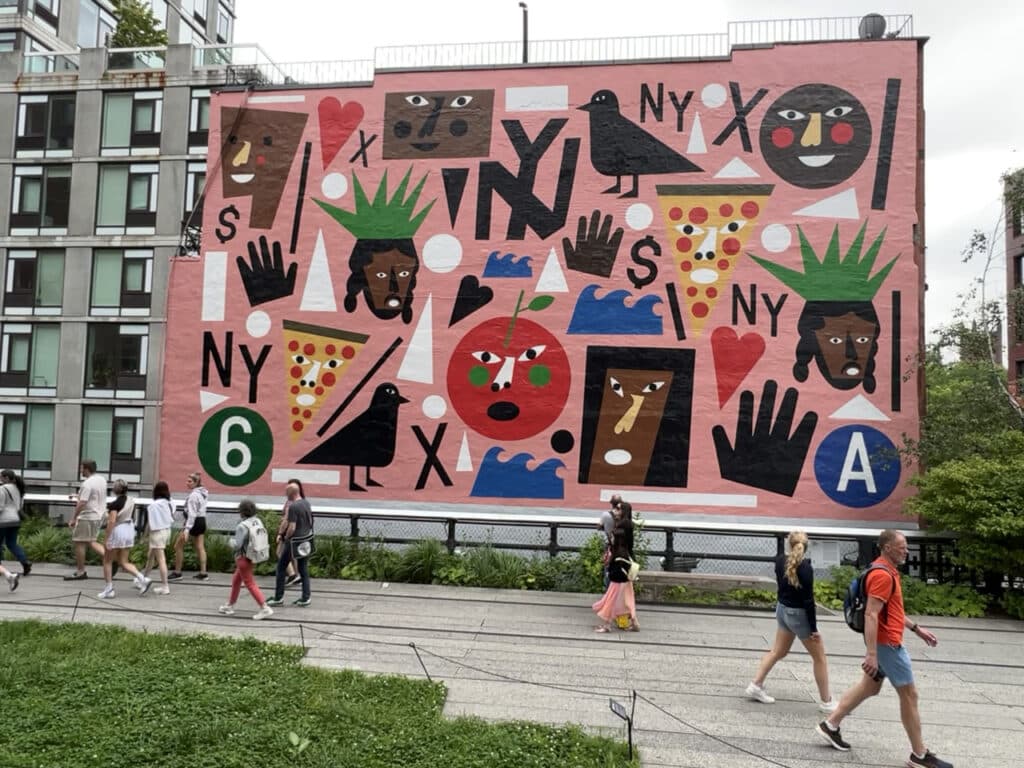
But the High Line, a 1.45-mile park that runs along 10th Avenue in Manhattan, from the Meatpacking District to Hudson Yards, made its first appearance in April 2009, just a few months before we moved to NYC. I can recall visiting it when only the first section, from Gansevoort Street to 20th Street, was open.
This was before huge crowds of tourists descended, before there was a human in the way of every photo you wanted to take, before clogged bottlenecks sometimes made it necessary to stick out your elbows if you wanted to take another step further.
And while wasn’t crowded back in 2009, it wasn’t finished either. The landscaping was in its early days and only a small portion of the park was open to walk on. But still, there was the knowledge that we who were visiting the fledgling High Line park were witnessing the beginning of something special.
Of the major tourist attractions in New York City, I think I can safely say that the High Line is the one I’ve visited the most. It’s perfect for meeting friends, for an outdoor picnic, or for a post-brunch stroll. Matt and I also love bringing our out-of-town visitors here.
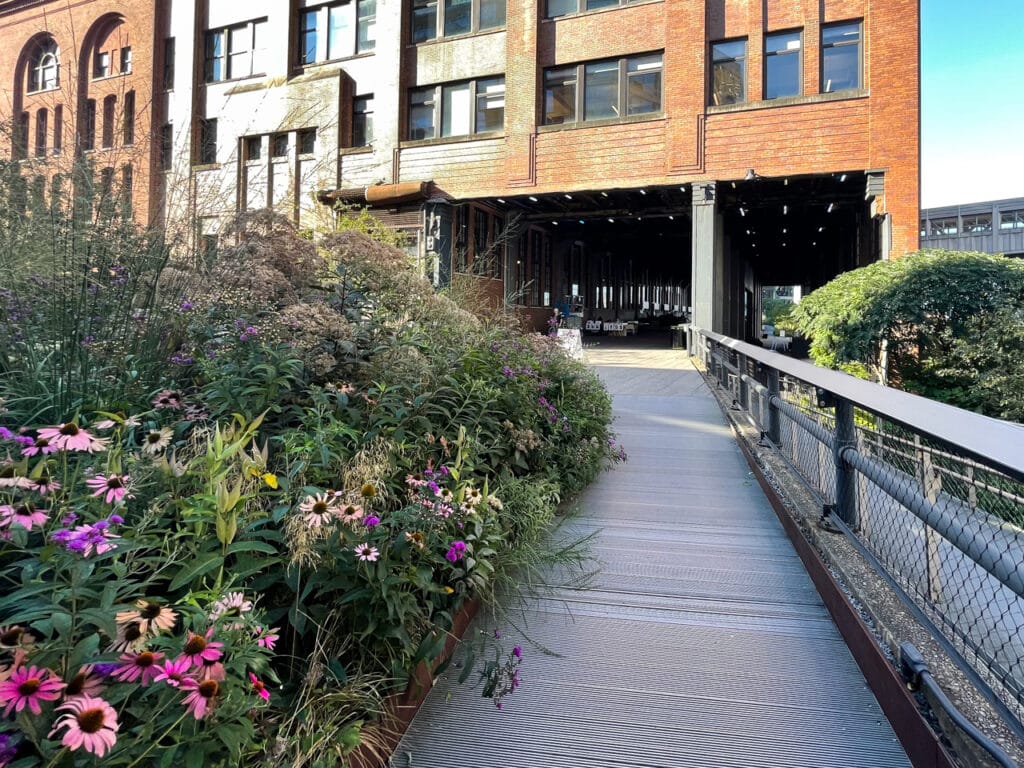
The High Line checks a lot of boxes of what I love about New York. It begins and ends in hip neighborhoods, it’s lined with swanky buildings that provide endless photo ops, and it’s a prime example of urban renewal.
Being elevated above street level provides unparalleled views that span out over the Hudson River and down the busy streets of New York City. Sleek new buildings are mixed in with old brick warehouses. And there are tons of natural gardens and public art along the way.
And if all of the above aren’t enough reasons to visit, the High Line is one of the absolute best free things to do in NYC. It gives visitors the chance to see various neighborhoods and examples of architecture both old and new, and provides an excellent sense of recent NYC history.
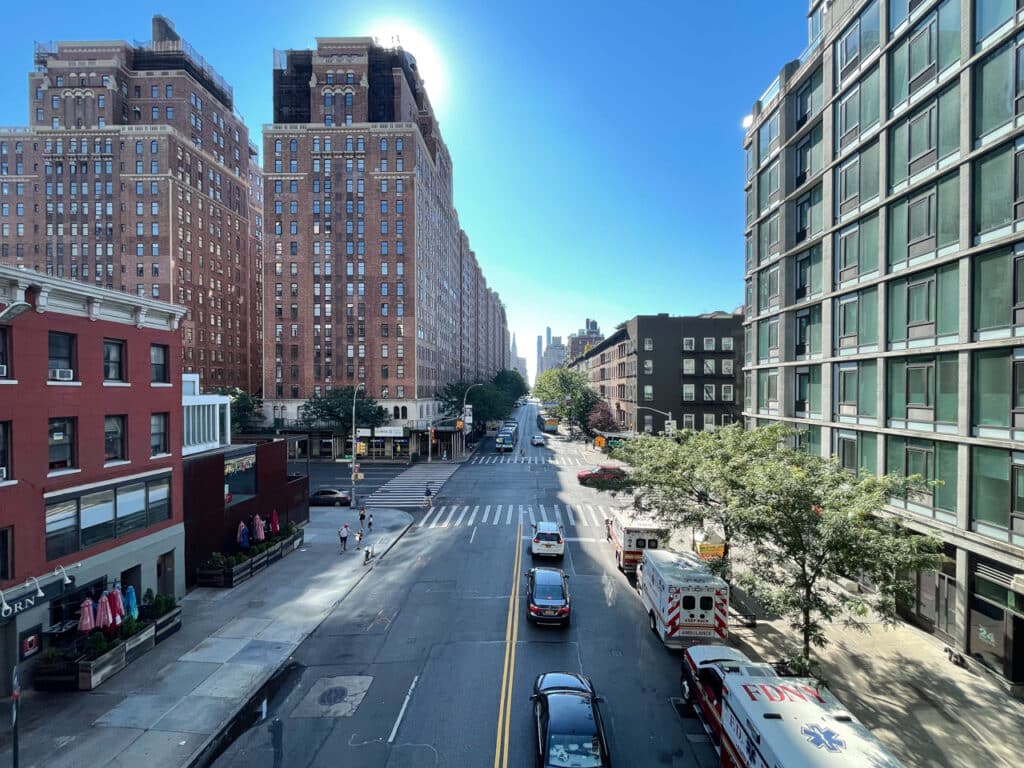
Read on for tips on walking the High Line, the best times to visit, and how to get there and away. But first, a quick history lesson!
History of the High Line in New York City
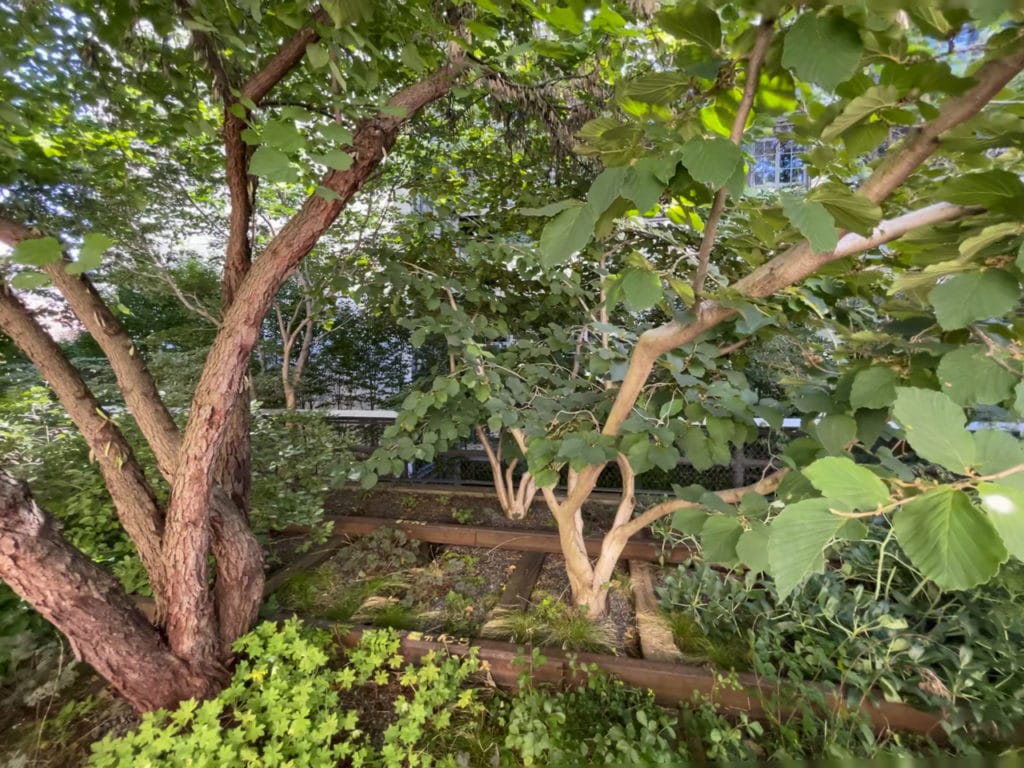
The High Line history in this section comes from this High Line History video. Check it out if you’d rather hear the soothing voice of Ethan Hawke describe how the park came to be rather than read my boring summary!
The High Line opened as a public space in 2009 but its roots go back much further. In the 1800s, freight trains delivering goods along 10th Avenue killed so many people that it created a public safety crisis. Even the “West Side Cowboys,” which consisted of men on horseback waving red flags ahead of the trains to warn pedestrians, didn’t solve the problem.
(TIP: Consider taking a Dark Side of the High Line tour if you’d like to hear more about West Side Cowboys and the landmark’s darker history).
In the 1930s, there was a solution: elevate the tracks 30 feet above street level. This prevented pedestrian deaths and also made it possible for the trains to stop and unload on the upper floors of the factories and warehouses they were carrying goods for.
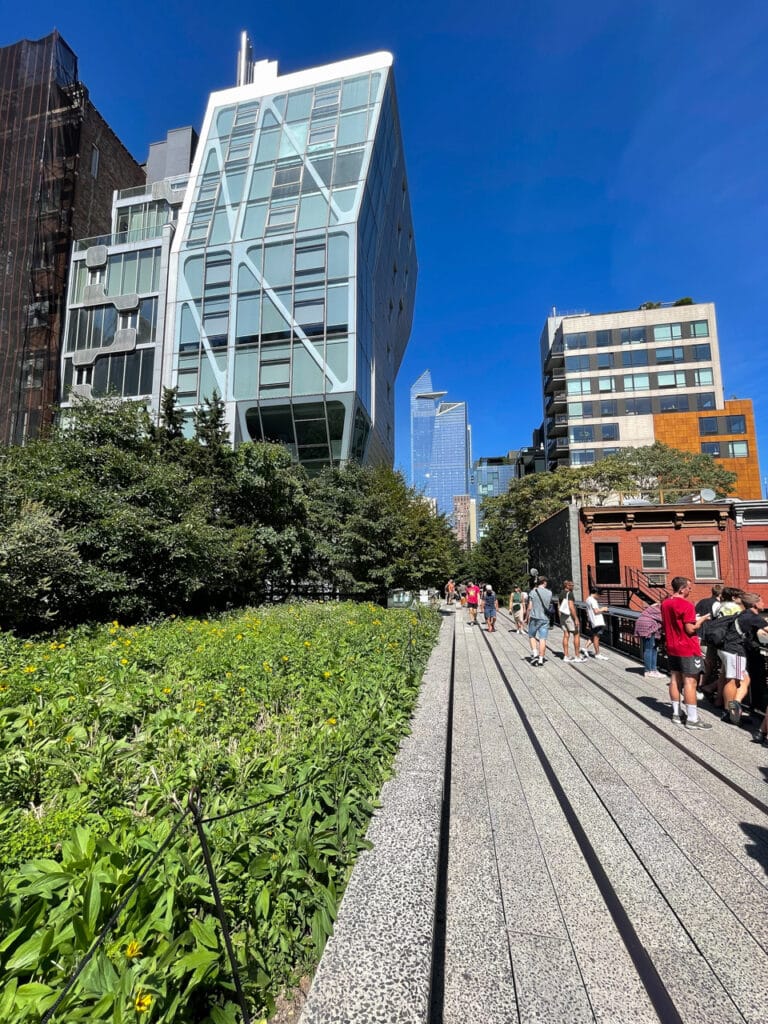
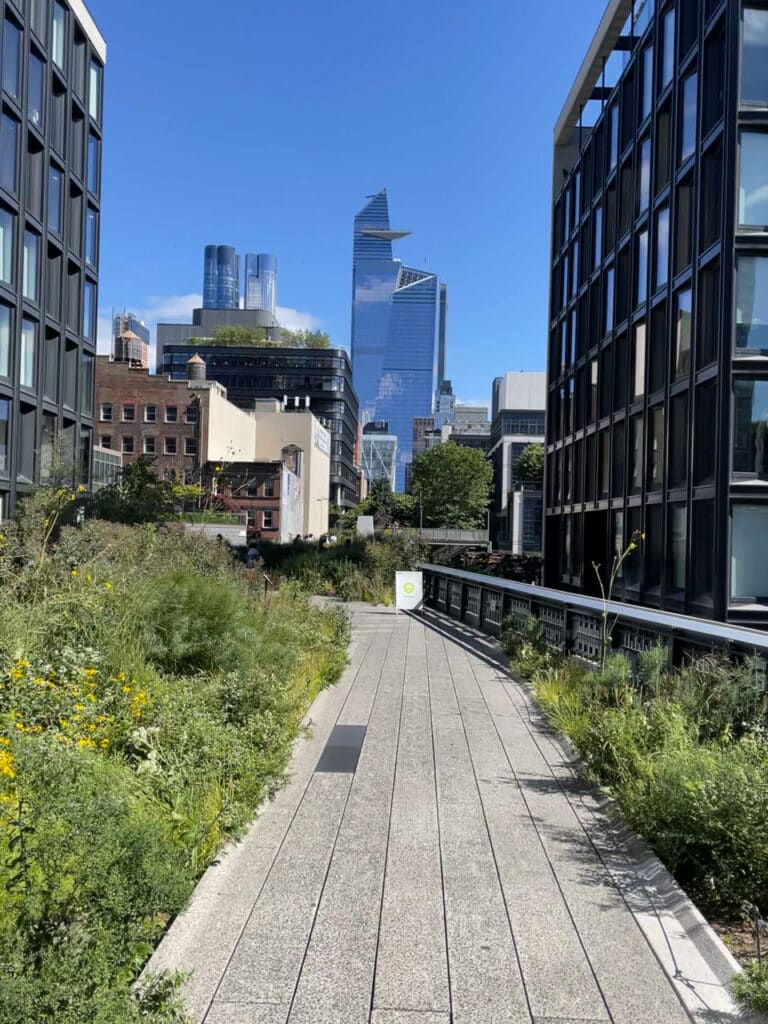
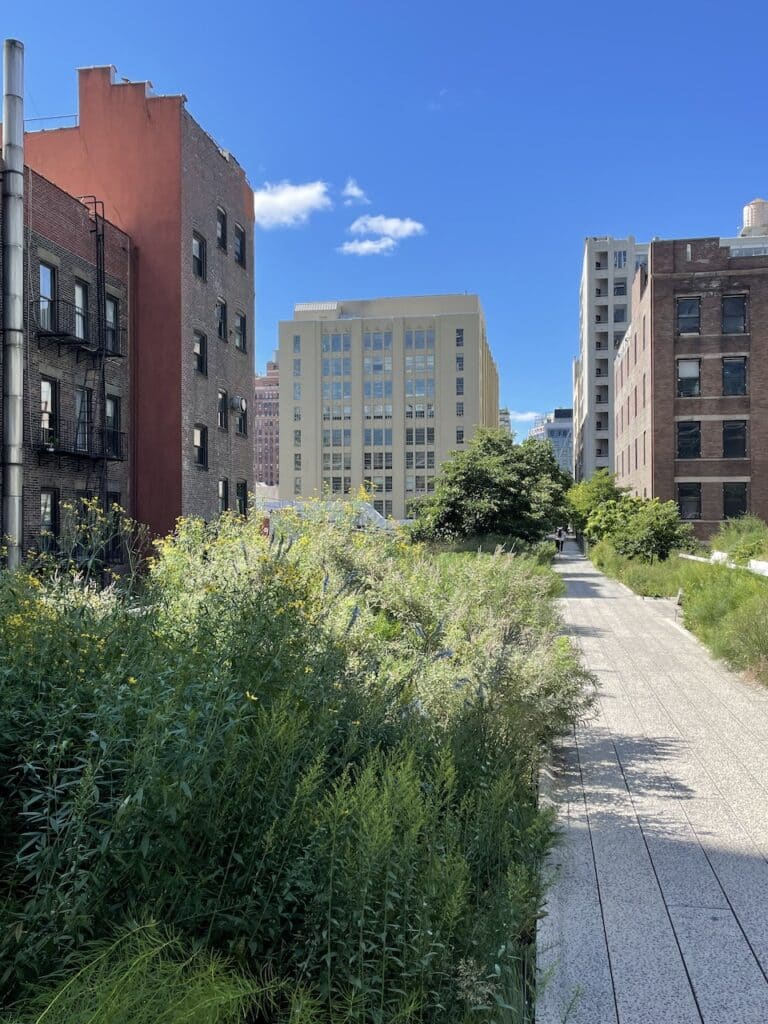
This worked well until the decline of the freight lines, which began around the 1960s when long-haul trucking became a cheaper way to deliver goods. By the early eighties, the rail line was entirely out of service and the “West Side Elevated Line” was abandoned.
But then another phenomenon began to occur. With the help of the wind and the birds, seeds that were dropped onto the rail line grew into a wild garden and, as Ethan Hawke describes,”grasses, wildflowers, and trees grew up, watered by the rain, sheltered by the buildings, and virtually untouched by humans.”
Some thought the abandoned rail line had become an eyesore and pushed to have it demolished. More visionary types recognized its potential and out of that forward-thinking, a non-profit organization called Friends of the High Line was created.
The elevated rail line was saved and transformed, section by section, into the renewed public space that is now as beloved by locals as it is by tourists.
Call it a ritual but I like to follow the same routine each time I take a High Line walk:
Tips for Walking the High Line
1. Go to Chelsea Market, located on 9th Avenue between 15th and 16th Streets. Grab a coffee, sandwich, or baked good from one of the many restaurants and cafes.
You can enter Chelsea Market on 9th Avenue, walk straight through, and then exit on 10th Avenue to prevent backtracking.
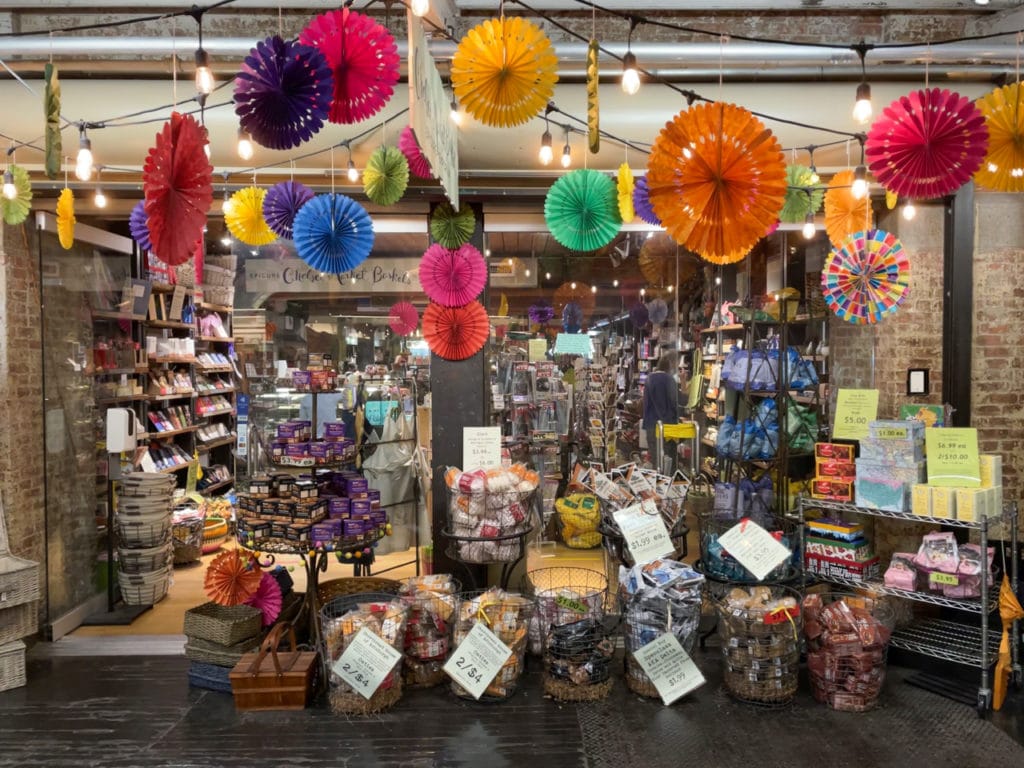
2. There is a High Line entrance near Chelsea Market on 16th Street, so you could exit the market and be on the walkway in moments. However, I like to begin at the beginning of the High Line. After I get my goods at Chelsea Market, I walk south (at street level) for about seven minutes until I reach the Whitney Museum, where the Gansevoort St. and Washington St. entrance to the High Line is.
At this intersection, you can also see the section of the High Line where the railroad track was actually severed in the 1980s, so apartment buildings could be built in its place. Once up on the High Line, this southernmost section is called the Tiffany & Co. Foundation Overlook.
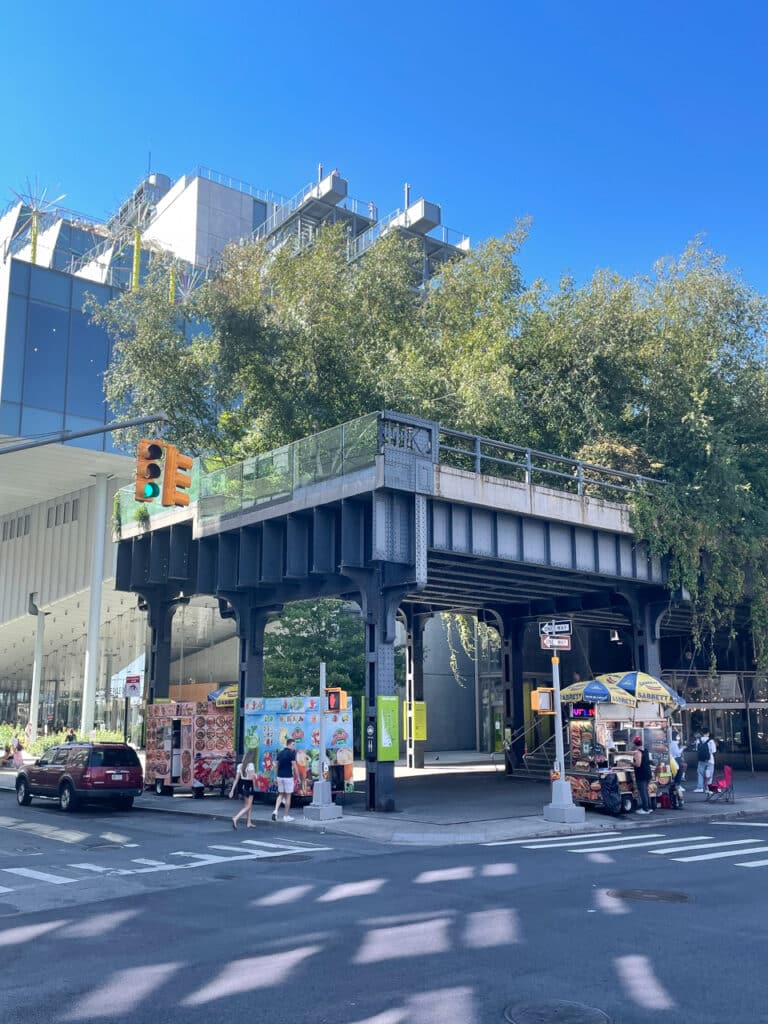
3. Shortly after entering the High Line, stop and look up at The Standard Hotel (at 13th St.), a 20-story hotel where each and every one of the 338 guest rooms has a floor-to-ceiling window.
This elevates people-watching to a whole new level, as you occasionally see hotel guests, mostly in miniature, staring back at you from the windows. Don’t be surprised if some are naked. It’s kind of a thing at The Standard.
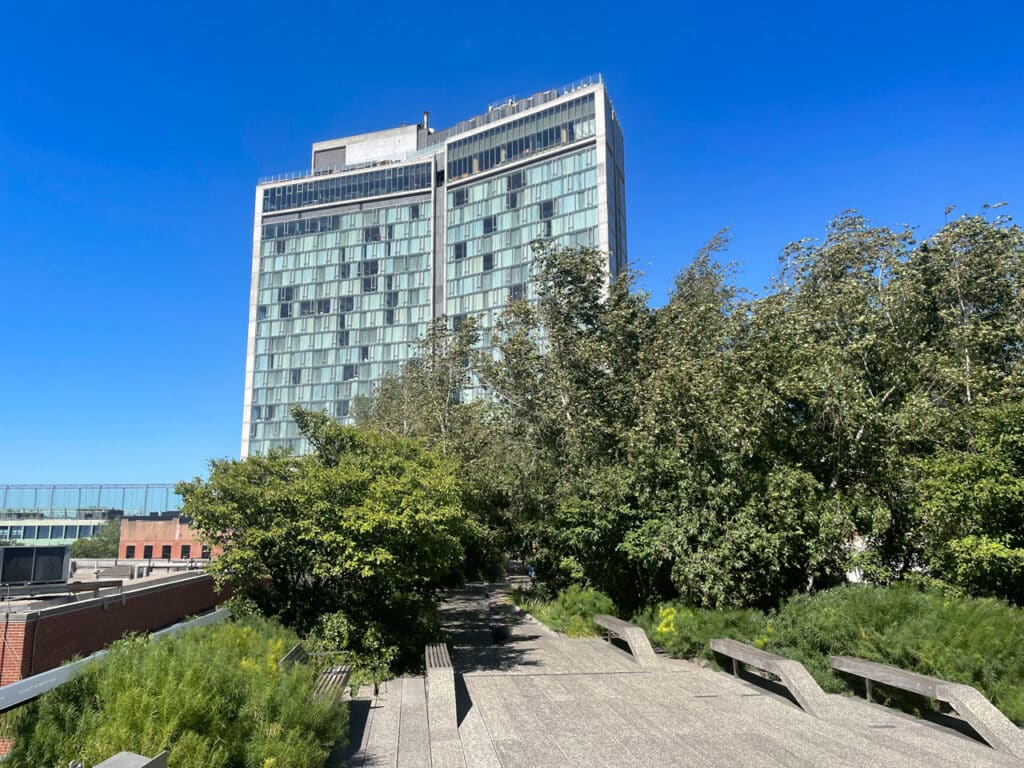
4. Next on the High Line, you’ll come to the 14th Street Passage (between 14th St. and 15th St.), a semi-enclosed passage where, at dusk, you can catch art exhibits projected onto the walls via video, courtesy of the High Line Channel.
5. Between 15th St. and 16th St., you can’t miss Chelsea Market Passage, an enclosed passageway that’s buzzing with vendors selling coffee, food, and souvenirs, as well as tourists shopping and trying to catch a little shade, especially if it’s a sweltering summer day. (Vendors are here from April-October).
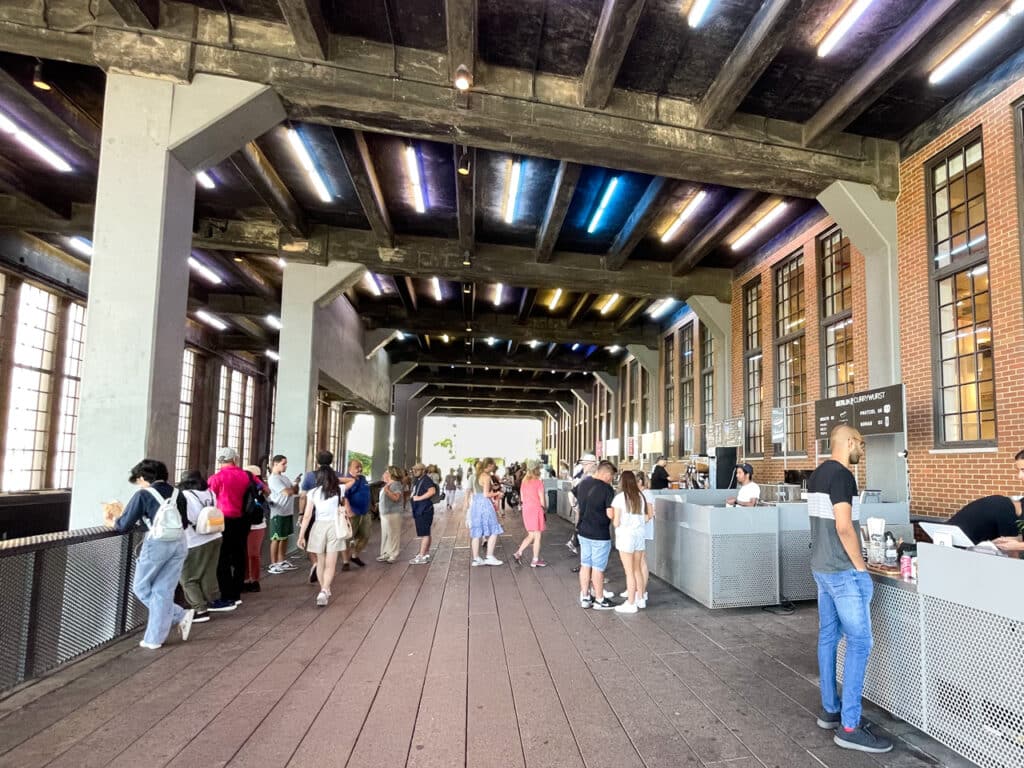
6. There are plenty of benches, lounge chairs, and other seating nooks along the High Line, but my favorite place to stop and eat or drink whatever I’ve brought from Chelsea Market is at the 10th Avenue Square & Overlook at 17th Street, which provides a hypnotizing scene, via a large viewing window, of frenetic New York traffic coming and going.
Just behind the steps, be sure to look out into the New York Harbor for a glimpse of the Statue of Liberty.
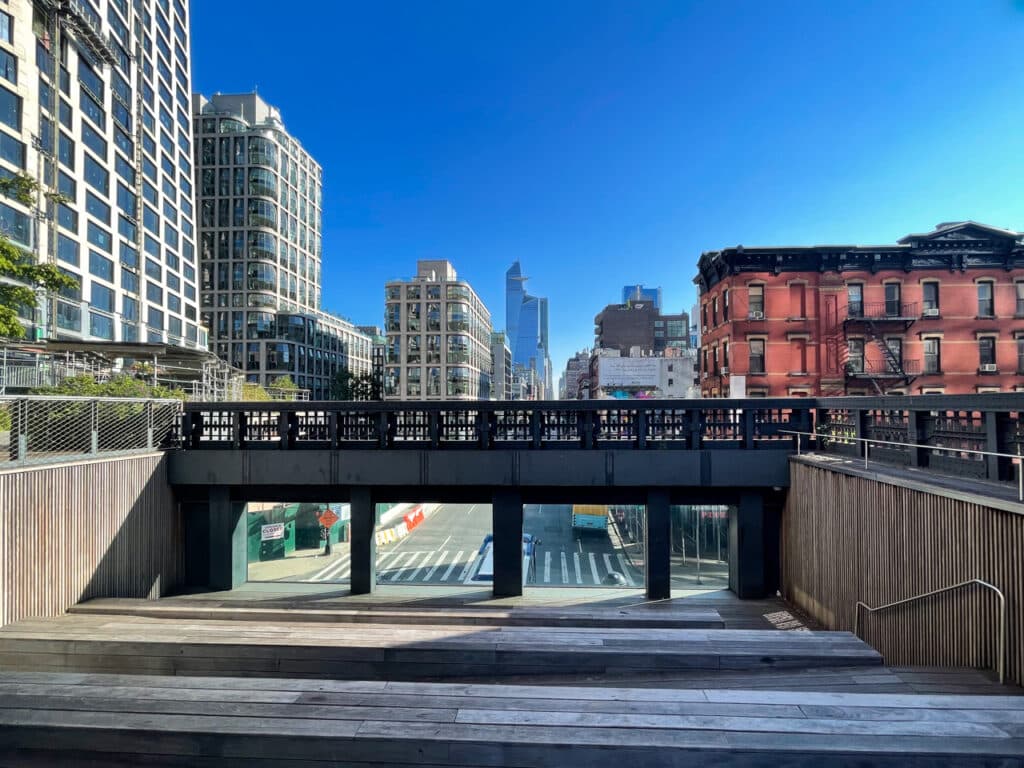
7. Beyond 10th Avenue Square & Overlook and until I reach the north end at Hudson Yards, I like to enjoy the High Line aimlessly, enjoying the public art, architecture, seasonal foliage, and some of the best views in New York City. It’s a destination that doesn’t require much planning, which is one of its many appealing features.
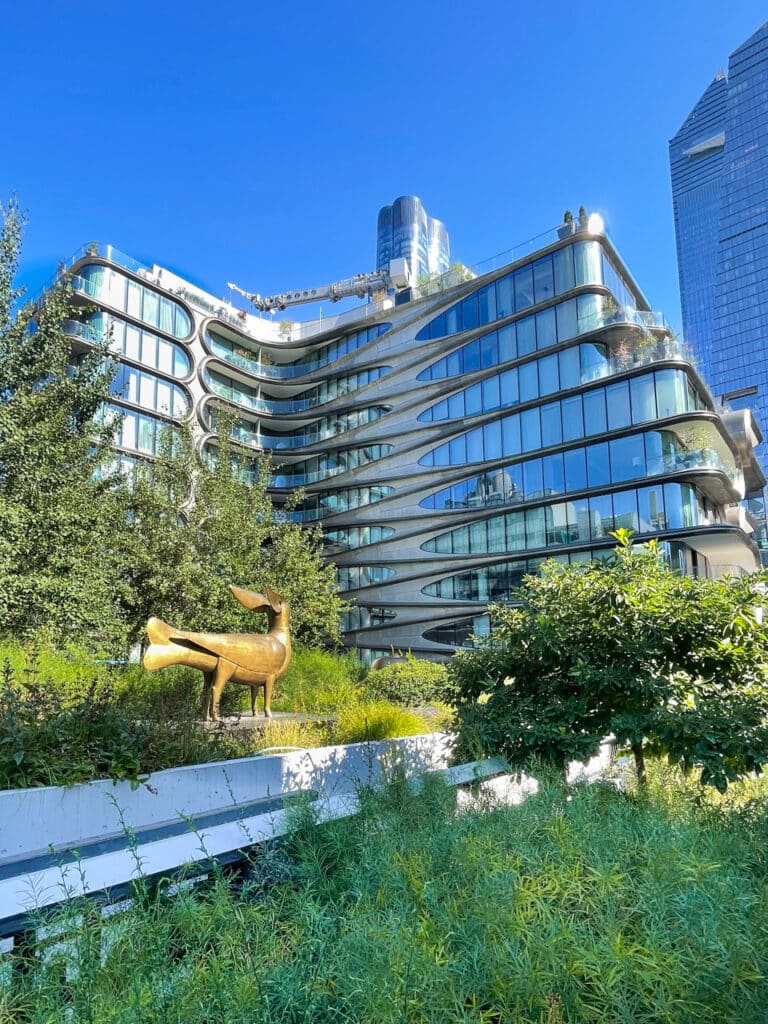
¨8. Every time I take this scenic New York walk, I end at the extended section known as the Plinth, which is located on the Spur at 30th Street. The Plinth is dedicated to showing large-scale art exhibitions for 18 months at a time. Currently on view is a 25-foot tall fiberglass sculpture of a drone, created by Sam Durant. The drone’s steel pole will turn when the wind picks up.
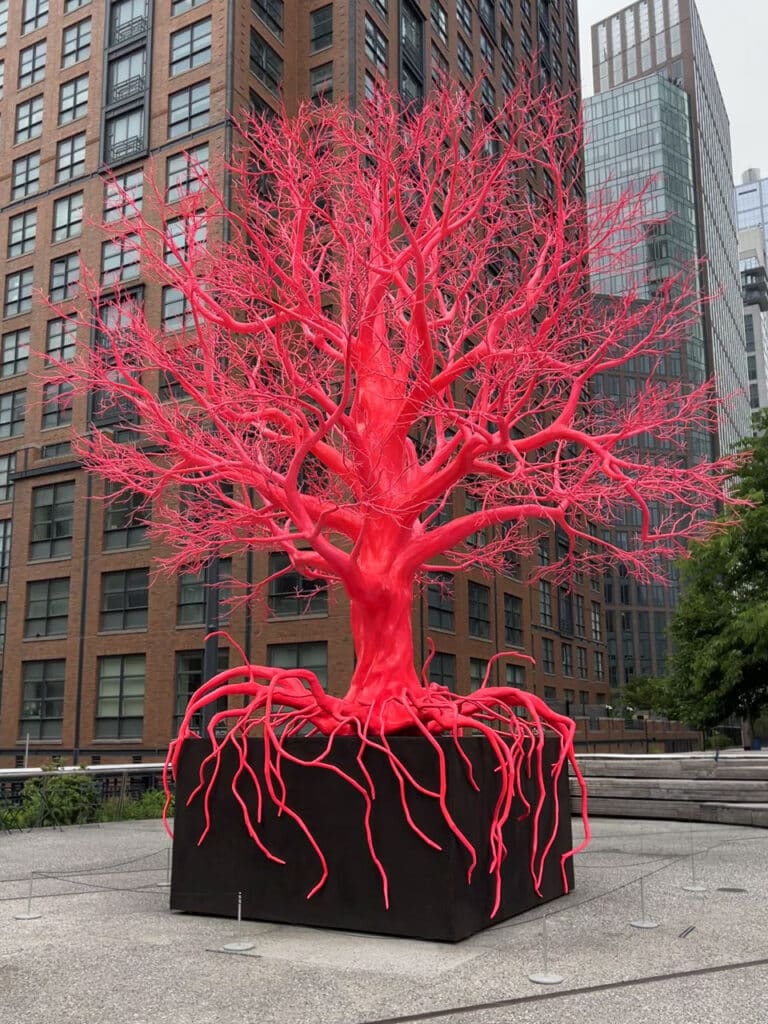
Things to do Near the High Line
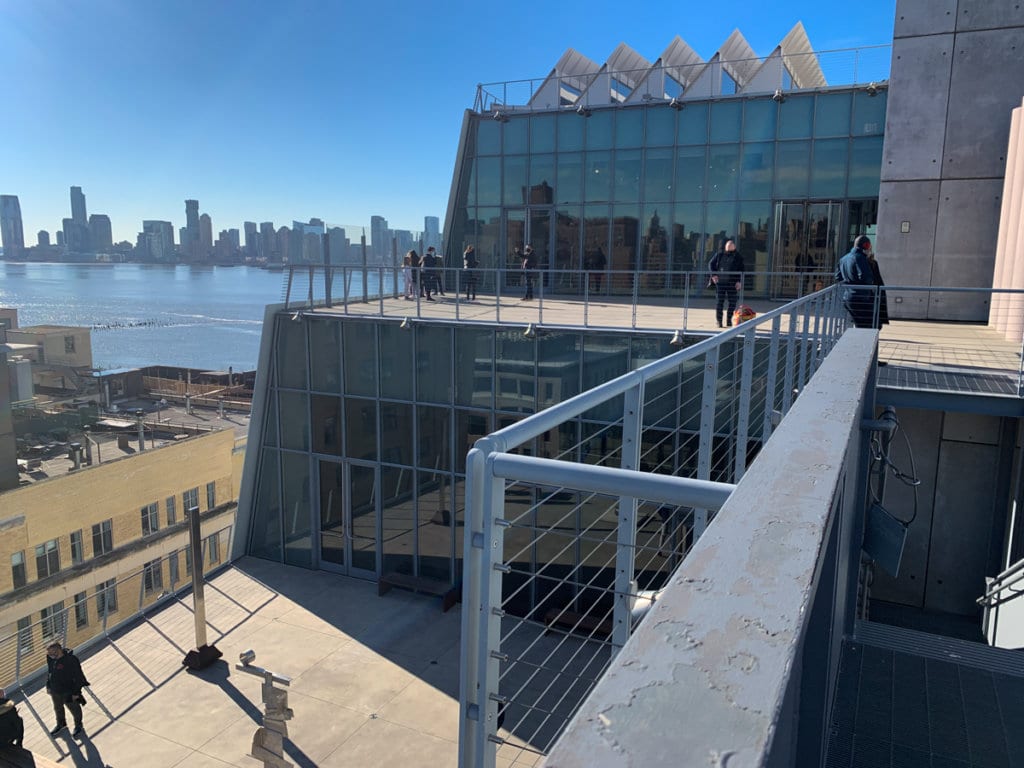
Walking the full length of the High Line puts you within reach of tons of amazing NYC attractions. Here are a few suggestions:
- Visit the Whitney Museum, which is dedicated entirely to American artists. The building was designed by architect Renzo Piano and includes outdoor terraces with Hudson River views. 99 Gansevoort Street, New York, NY 10014.
- See a cool immersive digital exhibit at ARTECHOUSE NYC, located inside Chelsea Market. Enter the market on West 15th St. between 9th and 10th Ave.
- Take a walk though Little Island, the quirky public park at Pier 55 on the Hudson River. A fun fact is that Little Island was designed by Thomas Heatherwick, who also designed the Vessel (at Hudson Yards) and the building with the barrel-shaped windows (Lantern House, pictured below) you passed by on the High Line (at 515 W. 18th St.).
- Chelsea is a hot spot for art galleries. Several can be visited within just a few steps of each other, including Gagosian Gallery, David Zwirner Gallery, and High Line Nine. Many are free to visit. See a list of Chelsea art galleries here.
- If you’ve arrived at the Spur at the north end of the High Line (30th St. and 10th Ave.), backtrack a little bit to Hudson Yards. Here you can hang out by the acorn-shaped landmark known as the Vessel, see an exhibit or live performance at The Shed, and go into the mall to shop, dine, or just relax for a few moments.
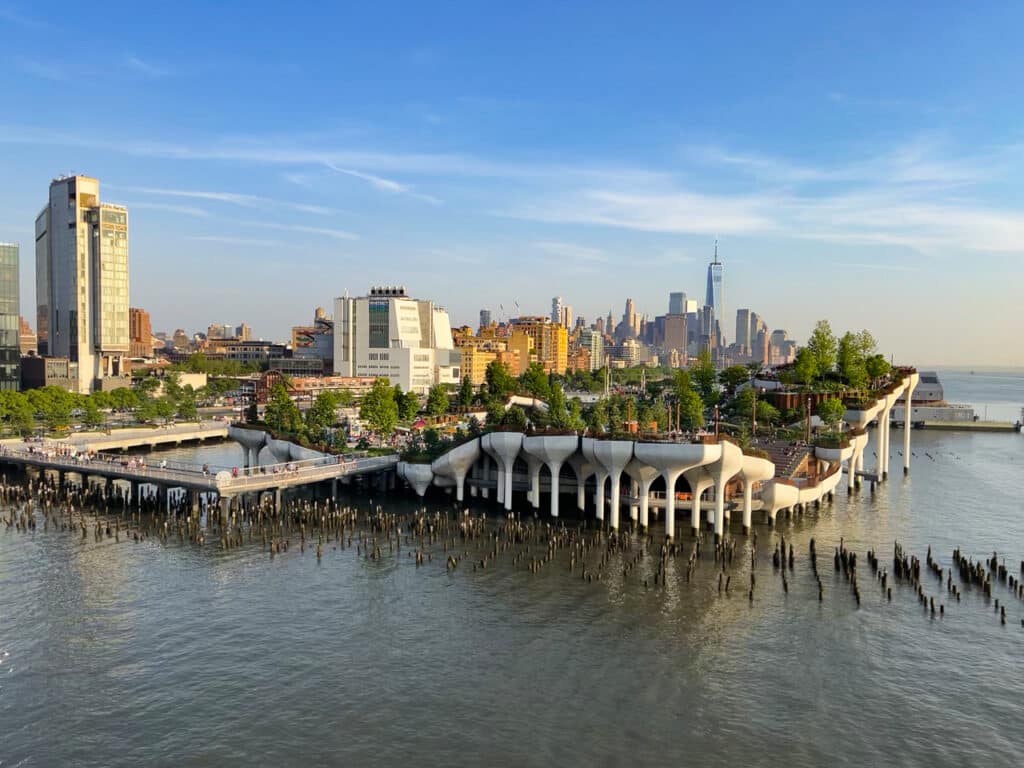
Visiting the High Line

How long does it take to walk the High Line? The answer depends on many things, from how fast you walk to how many people-watching breaks you take to how many photo ops you stop for along the way!
The High Line distance is 1.45 miles. At a regular pace, it would take about 30 minutes to walk from end to end. I recommend setting aside at least an hour to take photos, relax in seated areas, and fully enjoy the scenery and activity.
There are lots of entry/exit points along the High Line. The link also provides information on how to get to the High Line based on where you wish to enter.
Like this post? Pin and save for future reference!
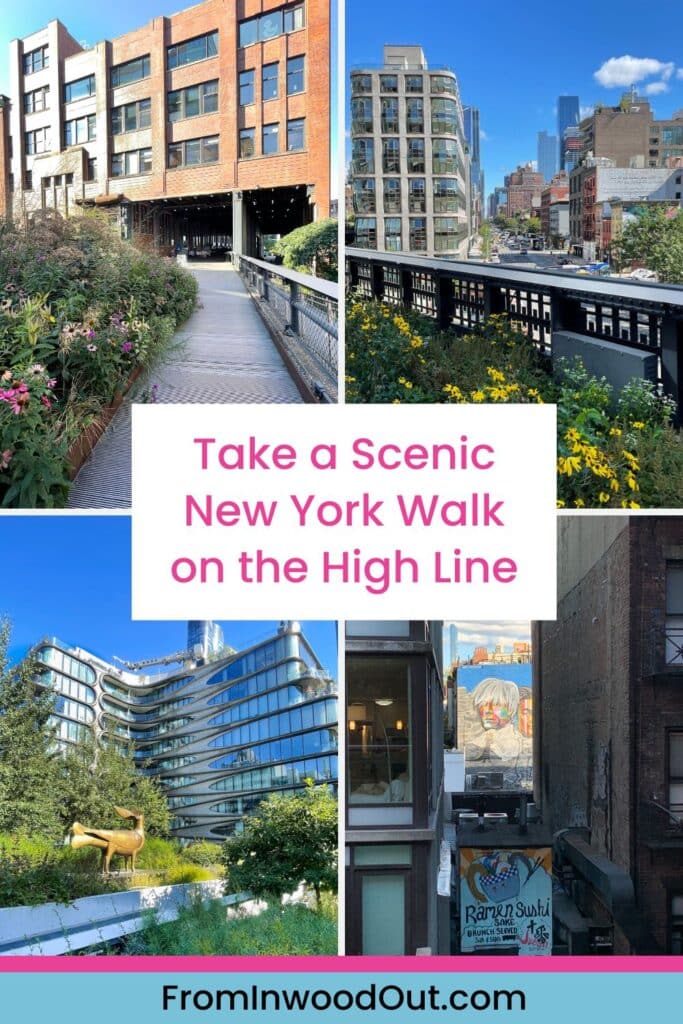
Admission and Hours
- Admission: Entrance to the High Line is FREE.
- Hours: Vary based on season.
- Accessibility: The High Line is wheelchair accessible. Elevators are located at designated entry/exit points.
Restrooms on the High Line
- Gansevoort Street and Washington Street
- 16th Street
- 30th Street Southeast
- Inside Chelsea Market
- Inside the Shops at Hudson Yards
High Line Events
The High Line offers a full calendar of exciting year-round events. Check out their calendar to find out when to join a free docent-led tour, a fitness class, a stargazing walk, live music and dance events, and so much more.
High Line Seating Areas
Visitors will find plenty of places to sit along the High Line. There’s a row of wooden chaise lounge-style chairs beginning around 14th Street, then there are the wide steps at the 10th Avenue Square & Overlook (at 17th St.), plus more steps at 22nd Street (in front of the large mural), as well as lots of benches along the way.
Best Time to Visit the High Line

The High Line is open year-round and every season has its merits. My favorite time of year to visit is spring, when seasonal blooms come to life and all New Yorkers begin to emerge from winter hibernation, excited about the warm months to come.
I also love going in the summer, when the gardens and trees along the High Line are at their greenest, although it does tend to be very hot during the dog days of summer, and there’s not a ton of shade. This may be a good time to check out the High Line after the sun goes down.
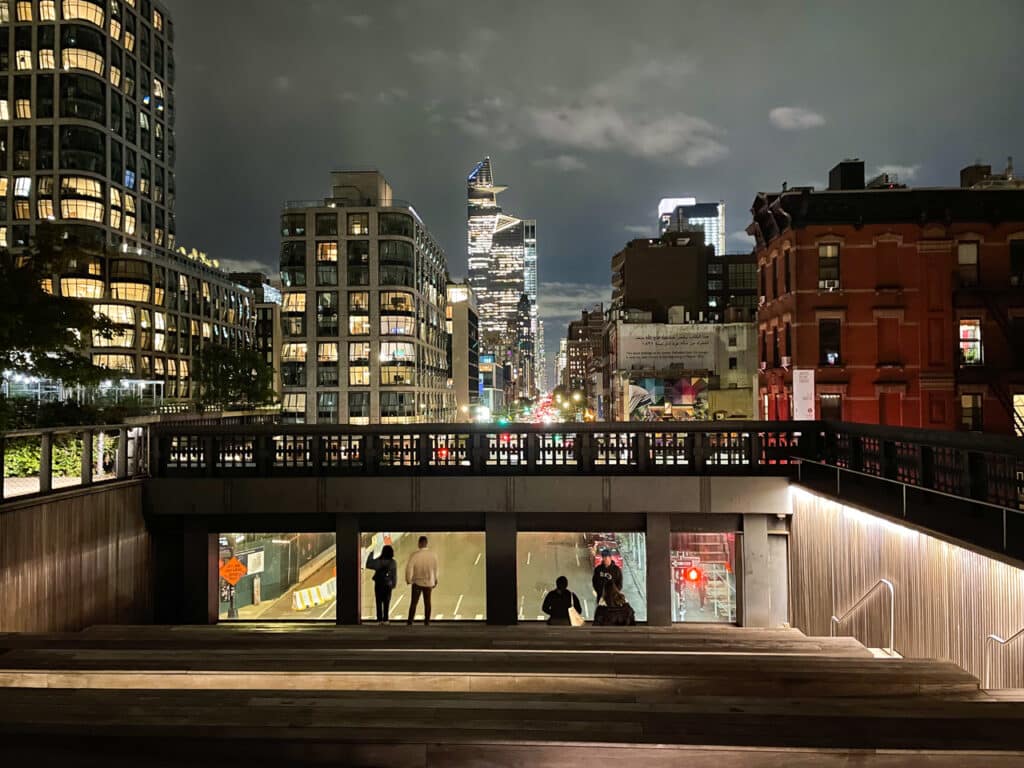
I try to visit at least once in the fall, when that hot summer weather begins to dissipate and the leaves begin to change colors.
And if you’re visiting New York City in the winter, don’t let a little cold weather hold you back. We tend to get a lot of brilliant blue sky days in January and February, and the contrast between that and the stunning architecture surrounding the High Line is quite striking. Note that the High Line will close during extreme winter weather.
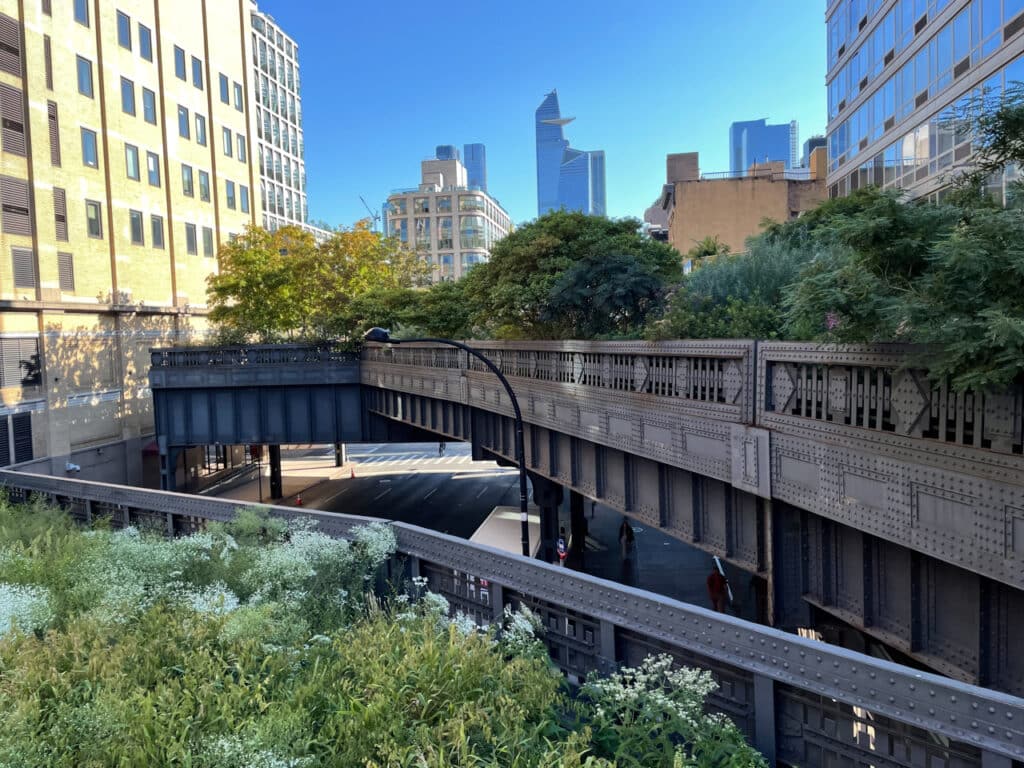
As far as crowds go, the High Line will be crowded nearly anytime you visit. January and February are low tourism months in New York City, so you’ll likely find the fewest crowds then. And if you really want to walk the High Line with as few people around, I recommend getting there as early in the morning as possible.
Looking back, the High Line was closed during the worst months of the coronavirus pandemic in 2020.
When it reopened, it was with strict capacity limits, and visitors needed timed tickets to enter. On the one hand, it was lovely to see the High Line less crowded during those dark days, resembling how it was way back in 2009.
But I’m also thrilled that tourism has returned to normal. I’d rather complain about the crowds, which are really the beating heart of New York City, than not have them at all.
Like this post? Pin and save for future reference!
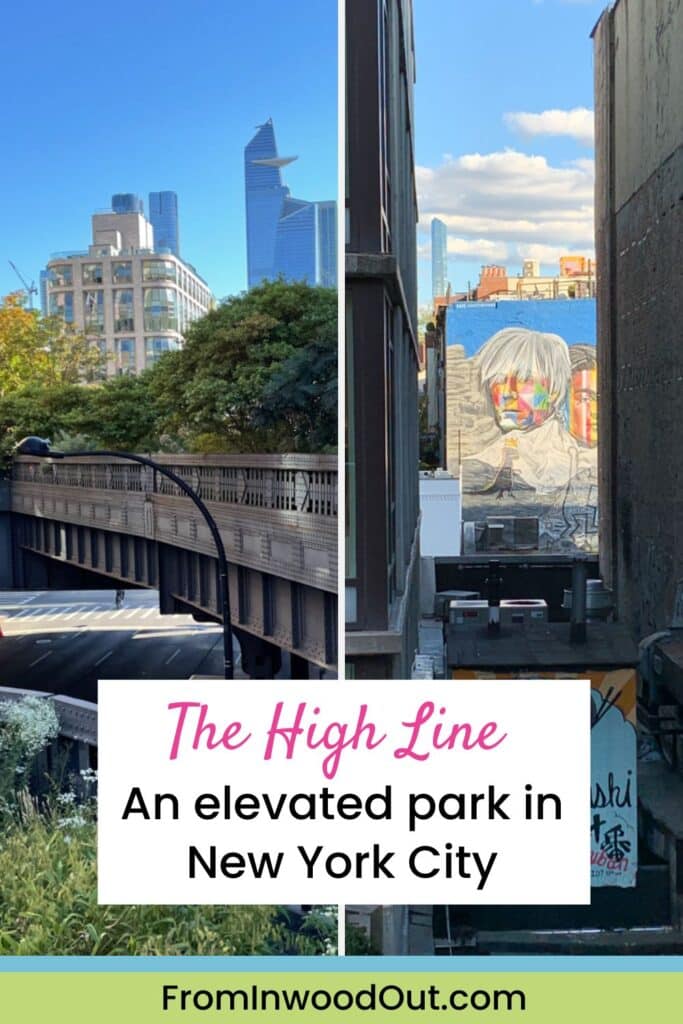
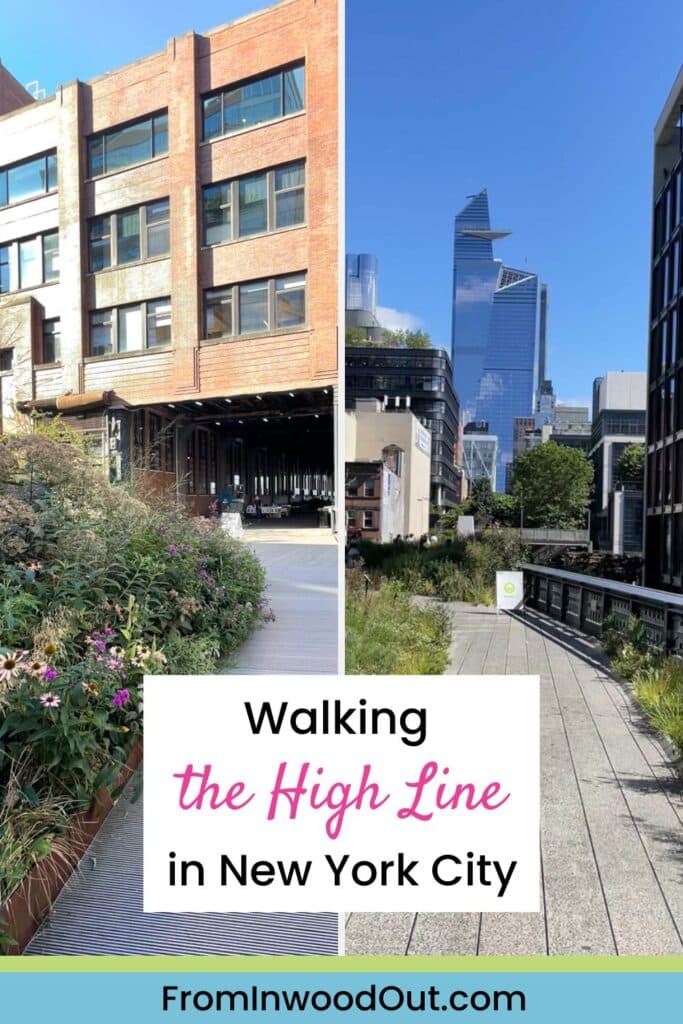
We loved visiting the High Line and enjoying Chelsea Market underneath! An NYC must do!
So glad! It really has become a must-do in NYC!
I think the Highline is a brilliant stroke of urban planning. I wish more cities would do that with their disused railways.
I agree. I’m amazed every single time I go!
I wanted to d this on my last trip but I ran out of time, I’ll fed be doing this next time
There never seems to be enough time to do everything, right?!
I didn’t come across this area last time I was in New York, but it looks so fun to walk through. Adding it to my list for when I return!
Definitely do. It gives a lot of bang for the buck…especially since it’s free, lol!
This is so cool! It reminds me a lot of the BeltLine in Atlanta. I love these types of pedestrian type paths through cities!
I love this type of thing, too! I’d love to see the one in Atlanta.
I never did this when I was there, but it looks amazing and so many epic photos to be taken from that vantage point. Love finding out history of different areas and this is no exception so thanks for including that too
I love learning the history of a tourist attraction, too. It usually adds such an interesting layer.